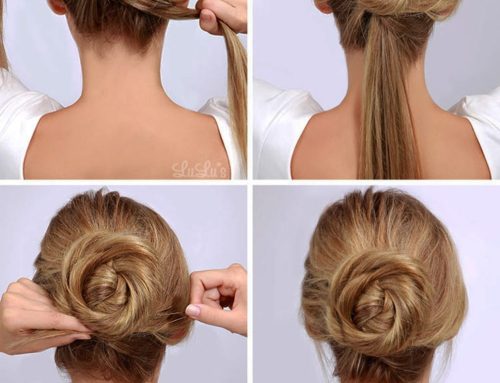Introduction:
Welcome to our blog! Are you facing challenges with your wig losing its luster and softness? Fear not! In this post, we’re sharing 20 simple yet effective techniques to rejuvenate the glossy texture of your wig. From DIY solutions to professional methods, we’ve got you covered to bring back that silky smoothness to your wig. Get prepared to witness the transformation of your wig from dry and stiff to silky and luxurious once again! Let’s delve into the strategies that will ensure your wig remains in its prime condition.
Indications Your Human Hair Wigs Need Softening:
If your wig feels rough or rigid, it might be time for a softening intervention. Here are some telltale signs suggesting your human hair wig requires softening:
Indication #1: Texture Coarseness
Running your fingers through the wig reveals a coarse texture lacking its once-smooth feel, possibly due to exposure to environmental factors or improper maintenance.

Indication #2: Absence of Elasticity
A well-softened wig should exhibit bounce and elasticity. If the hair feels stiff and lacks flexibility, it’s a sign it needs softening to regain its natural resilience.

Indication #3: Tangles and Knots
Over time, human hair wigs can develop tangled knots, making them challenging to manage. Softening treatments can aid in detangling the hair, rendering it more manageable.

Indication #4: Dryness and Brittle Strands
Dry and brittle hair signifies a lack of moisture in the wig. Softening treatments can replenish hydration, enhancing softness and preventing breakage.

Indication #5: Dull Appearance
A wig that has lost its softness may appear lackluster and dull. Softening procedures can restore its shine and vibrancy.

Indication #6: Difficult Styling
If your wig becomes resistant to styling and fails to retain curls or waves, it’s a sign that softening is necessary.

Indication #7: Static and Frizz
Lack of softness often leads to static and frizz, resulting in an unruly appearance. Softening treatments can tame static and minimize frizz, resulting in smoother, sleeker hair.

Indication #8: Matting
Matting occurs when hair strands intertwine, forming stubborn knots. Softening the wig can loosen these knots and enhance overall manageability.

Indication #9: Lack of Shine
Healthy wigs should radiate a natural shine. If your wig appears dull, softening treatments can restore its luminosity.

Indication #10: Loss of Smoothness
Smoothness is a hallmark of a soft wig. If your wig feels rough to the touch, it’s time for a softening treatment.

Remember, consistent care and maintenance are crucial for preserving the softness and elegance of your human hair wig. If you notice any of these signs, consider incorporating softening treatments into your regular wig care routine to maintain its soft and silky allure.
Causes of Dryness and Stiffness in Human Hair Wigs:
Several factors can contribute to the dryness, tangling, and lack of softness observed in human hair wigs. Let’s explore some common reasons behind these issues:
Cause #1: Natural Dehydration
Unlike natural hair, wigs don’t receive natural scalp oils, leaving them susceptible to dryness. Exposure to heat, sunlight, and harsh styling products exacerbates this, resulting in dry, brittle strands.

Cause #2: Excessive Heat Styling
Frequent use of heat styling tools damages the hair cuticles, reducing their ability to retain moisture, leading to dryness and stiffness.

Cause #3: Chemical Treatments
Chemical processes like coloring and perming strip the hair of its natural moisture, causing dryness and loss of softness.
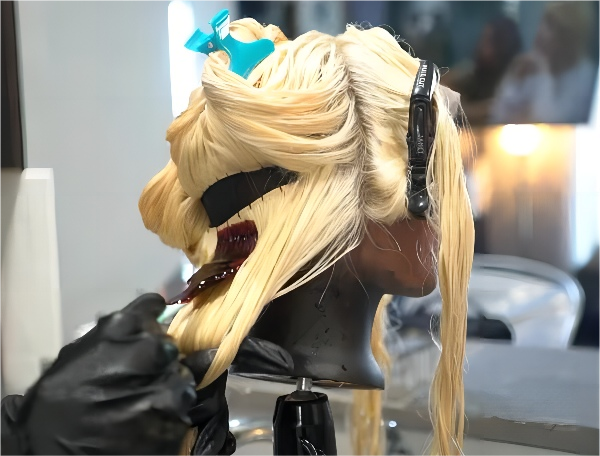
Cause #4: Incorrect Hair Care
Improper use of hair care products, such as sulfate-containing shampoos or neglecting regular conditioning, can worsen dryness.

Cause #5: Hard Water
Washing wigs with hard water leads to mineral buildup, making the hair feel rough and unmanageable.

Cause #6: Wear and Tear
Like natural hair, wigs undergo wear and tear with use, resulting in coarser texture and dryness over time.

Cause #7: Washing Frequency
Finding the right balance in washing frequency is crucial. Overwashing strips natural oils, while underwashing leads to product buildup and stiffness.

Cause #8: Lack of Protection
Failure to use heat protectants
or protect wigs during activities like swimming can damage the cuticles, resulting in dryness and brittleness.

Reason #9: Impact of Humidity and Climate
Both low and high humidity levels can profoundly affect the moisture balance of hair. In low-humidity environments, hair can parch and lose its softness, while high humidity can cause excessive moisture absorption, resulting in frizz and unruly texture.
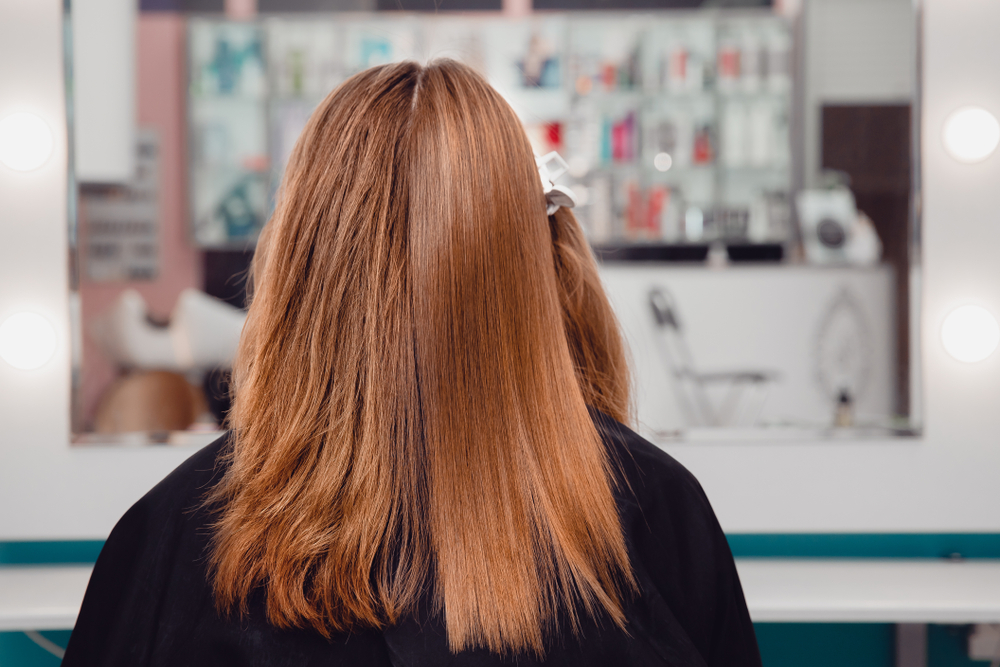
Reason #10: Overzealous Brushing or Combing
Aggressive brushing with stiff-bristled brushes can create friction on the hair, leading to cuticle damage and tangles. Over time, this can contribute to a rough, stiff texture.

Reason #11: Exposure to Chlorine and Saltwater
Chlorine from pools and saltwater from the ocean can strip the hair of its natural oils and moisture, resulting in dry, rough hair.

Reason #12: Insufficient Deep Conditioning
Regular deep conditioning is essential to replenish moisture levels in the hair. Without adequate deep conditioning, the hair can become dehydrated, losing its softness and shine.

Reason #13: Excessive Use of Styling Products
Using an abundance of styling products like gels and serums can weigh down the hair, making it feel heavy and stiff.

Reason #14: Neglecting Nighttime Protection
Friction against pillowcases during sleep can lead to tangling and dryness. Using a satin or silk scarf or pillowcase can minimize friction and preserve the hair’s softness.
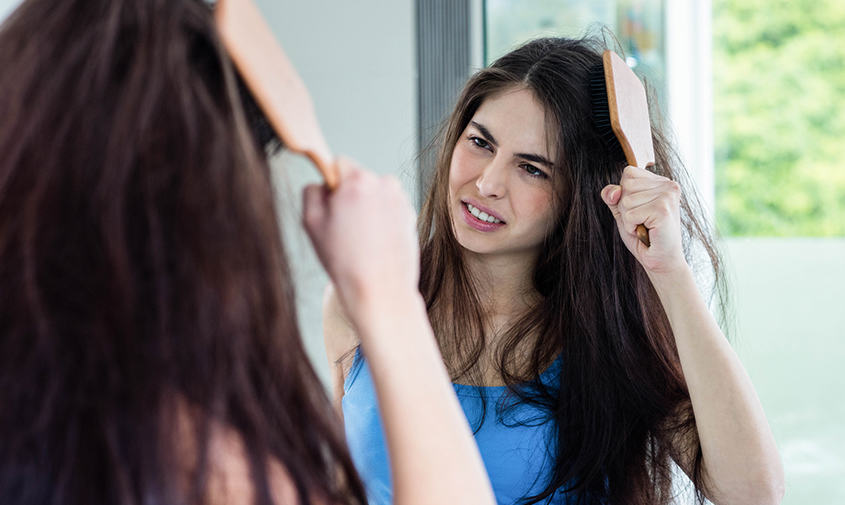
Reason #15: Lack of UV Protection
Prolonged exposure to UV rays can damage the hair cuticles, causing dryness and loss of shine.
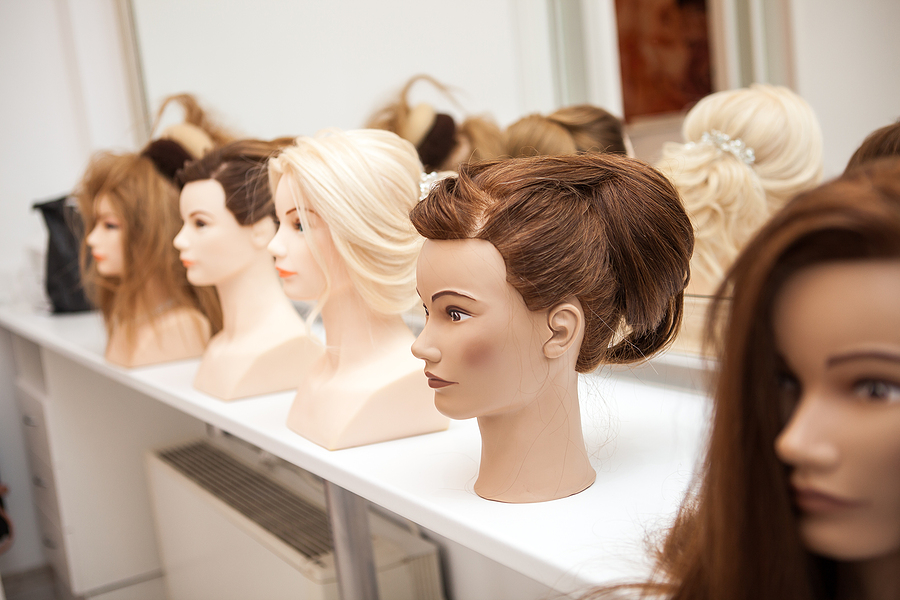
Reason #16: Improper Storage
Storing the wig in cramped or damp conditions can lead to tangling, matting, and overall dryness.

By addressing these factors and implementing a comprehensive care routine, you can prevent dryness and stiffness in your human hair wig, ensuring it remains soft, manageable, and looking its best for an extended period. Proper care and maintenance are essential for preserving the wig’s beauty and natural appearance.
Restoring Silky Softness to Your Human Hair Wig
To rejuvenate your human hair wig and restore its silky softness, follow these steps and tips:
Tip #1: Gentle Shampooing
Opt for sulfate-free, mild shampoos to cleanse your wig without stripping away its natural oils. Use cool or lukewarm water to avoid heat damage, preserving the hair’s texture and integrity.

Tip #2: Limit Heat Styling
Minimize the use of heat styling tools like flat irons and curlers to prevent damage to the hair cuticles. When necessary, apply a heat protectant spray before styling to shield the hair from excessive heat.

Tip #3: Air Dry
Whenever possible, allow your wig to air dry after washing to avoid dehydration caused by blow drying. Gently blot excess water and lay the wig flat on a towel or wig stand to dry naturally.

Tip #4: Deep Condition
Apply a high-quality wig conditioner from mid-lengths to ends after washing, allowing it to sit for 10-15 minutes to deeply nourish the hair. Rinse thoroughly and consider using a leave-in conditioner or serum for added hydration.

Tip #5: Handle with Care
Avoid brushing wet hair to prevent breakage, and use a wide-tooth comb to detangle damp hair gently. Start from the ends and work your way up to minimize stress on the hair shaft.

Tip #6: Choose the Right Brush
Opt for a boar bristle brush to detangle and style your wig gently. Boar bristle brushes distribute natural oils, promoting softness and shine without causing damage.

Tip #7: Moisturize Regularly
Apply a leave-in conditioner or natural oil like coconut or argan oil to damp hair to lock in moisture and enhance softness and shine. Adjust the frequency of moisturizing based on wear and climate conditions.

Strategy #8: Shield from Sun and Heat

Direct exposure to sunlight and excessive heat can wreak havoc on the delicate hair fibers of your wig, causing it to lose its softness over time. On sunny days, consider accessorizing with a hat or scarf to provide a protective barrier against harmful UV rays. Moreover, refrain from placing your wig near sources of high heat, such as radiators or stoves, to prevent damage from prolonged exposure.
Strategy #9: Careful Sleep Habits

To prevent tangling and preserve softness, adopt a gentle nighttime routine for your wig. Prior to bedtime, loosely braid or tie your wig into a ponytail to minimize friction and maintain its texture. Opt for bedding made from satin or silk to further reduce the risk of hair becoming rough or tangled during sleep, ensuring your wig retains its best appearance.
*Related: >*
Strategy #10: Consistent Trimming

Regular trims are essential for sustaining the health and aesthetic appeal of your human hair wig. Aim to schedule trimming sessions every 6 to 8 weeks, focusing on small sections at a time to achieve precise cuts. Before trimming, gently detangle the wig and pay special attention to the ends to remove any damage or split ends. If your wig features a specific style, maintain it during trimming sessions and seek professional assistance for intricate adjustments. By adhering to a consistent trimming schedule and practicing proper maintenance, you can prolong the freshness of your wig, prevent split ends, and ensure it maintains a soft, natural appearance over time.
Strategy #11: Proper Storage Techniques

Implementing correct storage practices is crucial for preserving the quality of your wig. Before stowing it away, ensure the wig is thoroughly cleaned and dried, and delicately detangle any knots. Utilize a wig stand to maintain its shape and prevent tangling during storage. Store the wig in a cool, dry location away from direct sunlight and heat sources, covering it with a breathable cloth or hairnet to safeguard against dust and debris while allowing adequate airflow. Refrain from subjecting the wig to friction, folding, or compression, and consider employing wig storage bags or boxes for additional protection. If you own multiple wigs, rotate their usage to prevent overuse of a single wig. By following these storage guidelines, you can preserve the softness and integrity of your wig, ensuring it remains comfortable and natural-looking for an extended period.
Strategy #12: Avoid Excessive Washing

While maintaining cleanliness is essential, excessive washing can strip your wig of its natural oils, resulting in dryness and roughness. Reserve washing for instances when the wig is visibly soiled or after prolonged wear. For daily wearers, washing once every 1-2 weeks is typically sufficient to maintain softness and prevent over-drying.
Strategy #13: Cool Water Rinse

As a concluding step in your wig washing routine, opt for a cool or cold water rinse. Coldwater aids in sealing the hair cuticles, imparting smoothness and shine to the strands. This simple yet effective technique enhances the overall softness and luster of your wig, leaving it feeling luxurious and easier to manage.
Strategy #14: Weekly Oil Treatment

Enhance with Weekly Oil Treatment

Revitalize your wig with a weekly oil treatment, a simple yet effective remedy for dryness and stiffness. Begin by delicately detangling the wig using a wide-tooth comb or a brush designed for wigs. Then, apply a small amount of nourishing natural oil—such as coconut oil, argan oil, or jojoba oil—to the mid-lengths and ends of the hair, gently massaging it in. Allow the oil to permeate the wig for at least 30 minutes to an hour, or for a more intensive treatment, leave it on overnight. Rinse the oil out with cool or lukewarm water, followed by a gentle sulfate-free shampoo and conditioner specifically formulated for wigs. Afterward, let the wig air dry completely on a wig stand or mannequin head. This weekly ritual will replenish moisture, restore softness, and impart a lustrous shine to the hair, making it more manageable and comfortable to style as desired.
Tip #15: Steer Clear of High Alcohol Hair Sprays

Be mindful of hair sprays containing high levels of alcohol, as they can contribute to dryness and damage. Opt instead for alcohol-free hair products or those specifically tailored for wigs to preserve softness and prevent potential harm. This precautionary measure ensures smooth and frizz-free hair.
Tip #16: Utilize a Wig Cap

For regular wig wearers, incorporating a wig cap underneath can offer multiple benefits. Not only does it provide a comfortable barrier between your scalp and the wig, but it also shields the hair and wig from sweat and oils. This additional layer of protection contributes to the wig’s longevity and softness by preventing the hair from becoming oily or tangled.
Tip #17: Embrace the Steam Treatment

Revive your wig with a revitalizing steam treatment. Begin by ensuring the wig is clean and free of tangles. Set up a garment steamer or handheld steamer with water and allow it to heat up. Hold the wig or place it on a stand, then gently pass the steamer over the hair, starting from the roots and working your way down to the ends. This process helps open the cuticles and allows moisture to penetrate the hair shaft. Optionally, apply a leave-in conditioner for added hydration. Allow the wig to cool and dry naturally before styling as desired. Performing this steam treatment monthly or as needed maintains the wig’s softness and overall health, ensuring a luxurious and comfortable wearing experience.
*Related: >*
Tip #18: Dodge Chlorine and Saltwater

Chlorine from swimming pools and saltwater from the ocean can dehydrate the hair, resulting in a dry and rough texture. If you anticipate swimming while wearing your wig, take precautions to minimize exposure to these elements. Consider wearing a swim cap or thoroughly rinsing the wig with cool water after swimming to eliminate any residual chemicals or salt.
Tip #19: Shield from Friction

Friction can lead to tangling and roughness in the hair. Avoid rubbing the wig against abrasive surfaces and handle it with care to minimize friction. Gentle treatment helps preserve softness and prevent damage, ensuring your wig remains in optimal condition.
Tip #20: Prevent Excessive Product Buildup

To prevent product buildup in your wig, use hair products sparingly and opt for lightweight formulations designed specifically for wigs. Cleanse the wig regularly with a mild shampoo, ensuring thorough rinsing to remove any residue. Periodically, conduct a deep cleansing treatment using a clarifying shampoo or a mixture of water and apple cider vinegar. Avoid applying styling products directly to the wig cap and gently detangle the wig to prevent breakage. Allow the wig to air dry after washing, avoiding excessive heat from blow dryers. Rotate products to prevent the accumulation of any single product. By adhering to these practices, you can maintain a fresh, lightweight, and manageable wig, ensuring its softness and overall health for an extended period.
By diligently following these tips and providing proper care and attention to your wig, you can prolong its softness, silkiness, and luster, making it a pleasure to wear and style while boosting your confidence in any setting. Consistency in your wig care routine is key to maintaining its optimal condition.
Final Thoughts
There you have it! Our guide to achieving Silky & Soft hair is now at your disposal, ready to transform your human hair wig from mundane to magnificent! Armed with these 20 innovative strategies, you’ll exude the confidence of a runway model, captivating onlookers wherever you go. Bid farewell to product overload and allow your wig to bask in a realm of fresh, weightless goodness! We’ve thoroughly enjoyed embarking on this journey with you and hope you’ve had as much fun as we have. Keep embracing your style with flair and panache—here’s to many more delightful wig days ahead!
Images credit: Google, Pinterest, TikTok.
